The apple or cultivated apple ( Malus domestica) can be eaten with or without peel and if it is of the appropriate quality. eat raw. However, many valuable ingredients (secondary plant substances, antioxidants) are found in and directly under the peel.
Use in the kitchen:
Should you peel an apple? Fresh apples taste best with the peel on. Especially with organically produced apples, you should eat the peel too. If the apple has been stored for a long time and the peel is leathery or very shiny, it is worth peeling it off and just enjoying the inside of the apple. But even peeled apples should be washed well beforehand so that no dirt or residues of pesticides get onto the flesh.
The aroma of an apple depends on the apple variety, the climatic conditions, the time of harvest and the storage time after harvest.
As a raw food, you can enjoy a peeled apple as a snack between meals, diced with other types of fruit as a fruit salad or grated in a raw vegetable salad, e.g. with carrots, radishes, raw sauerkraut, beetroot, parsnips, red bell peppers or celeriac. A teaspoon of linseed oil or rapeseed oil, linseed or walnuts provide additional valuable omega-3 fatty acids and refine the taste of the dishes. Raw apple sauce also tastes excellent when pureed with a ripe banana and lemon juice.
For many recipes such as puree, compote, flan, strudel or cake, you can remove the peel beforehand to achieve a finer consistency. It's not just cinnamon and cloves that go particularly well with apples, but also cardamom, vanilla, tonka bean, lemon peel, nutmeg, star anise or, for those who like it refreshingly spicy, rosemary.
Conventionally grown apples have a lot of pesticide residue on the apple peel. Unfortunately, simply washing them is not enough. Most of the pesticides can only be removed if you wash the apple for a long time under warm running water and then rub it dry with a kitchen towel. Baking soda also removes harmful substances from fruit if you soak it in a baking soda solution for around 15 minutes. 1 Pesticide residues can also be removed by simply peeling the apple, but this also means that the healthy secondary plant substances contained in the peel are completely lost.
Vegan recipe for apple compote:
Ingredients: 850 g apples, 270 g water, 1 tbsp lemon juice, 3 tbsp sugar, 3 cloves, 1 cinnamon stick.
Preparation: Wash, peel, quarter and core the apples. Place the apples cut into slices or pieces in a pot with water, lemon juice, sugar and spices. Bring the compote to the boil and simmer gently for about 20 minutes. Remove the cinnamon and cloves before eating. Served in bowls, this makes an excellent dessert. The sugar can easily be replaced with maple syrup or, if the apples are particularly sweet, omitted altogether.
Vegan recipe for applesauce:
Ingredients: 2 kg apples, 200 ml water, juice of half a lemon, depending on taste: cloves, cinnamon stick, vanilla pod, star anise.
Preparation: If you use sweet apple varieties, you don't need any sugar. To make the apple sauce, wash the apples thoroughly, peel them, remove the core and cut them into pieces. Cook the apples, water and lemon juice in a pan for about 20 minutes until soft. Depending on the desired consistency, you can now roughly mash the apples or puree them with a blender to make a fine puree. You can achieve a creamier consistency if you pour off the water before pureeing. If you fill them into sterilized jars, the homemade apple sauce will keep in the fridge for a few weeks.
Applesauce is used, especially in vegan cuisine, as an egg substitute and natural sweetener for cakes, muffins and pastries. Approximately 80 g of applesauce replaces one egg and the apple flavor evaporates almost completely during baking or at least is not negatively noticeable.
Tea with apple peels:
Apple peels are an excellent tea to make. To do this, place the peels on a baking tray lined with baking paper and let them dry in the oven at low temperatures (approx. 50 °C), or alternatively in the sun or over the heater. For one cup of tea, you need approx. 1 teaspoon of dried apple peels, which you pour hot water over. Depending on your taste, you can remove the peels from the tea after 5 to 10 minutes and then sweeten it as desired with honey, maple syrup or sugar.
In summer, a cold extract is also delicious as apple peel tea. Pour half a liter of water over two tablespoons of dried apple peel and leave the drink in the fridge overnight. Refined with lemon balm or green mint, the "iced tea" tastes even more refreshing the next morning.
The dried apple peels are broken into small pieces. Then they are stored in a screw-top jar in a dark place. You can add natural flavor to the peels by adding cinnamon, cloves or dried ginger to the jar.
Vegan recipes with cultivated apples can be found under the note: " Recipes that have the most of this ingredient ".
| Not only vegans or vegetarians should read this: Vegans often eat unhealthily. Avoidable nutritional errors. |
Shopping - where to buy?
In all supermarkets such as Coop, Migros, Denner, Volg, Spar, Aldi, Lidl, Rewe, Edeka, Hofer etc. you can buy a wide variety of apple varieties all year round. Because they are often treated with pesticides, you should prefer organically produced apples. Supermarkets usually also offer 1-2 varieties from organic farming, otherwise you can definitely find organically produced apples in organic shops, organic supermarkets (e.g. Denn's Biomarkt, Alnatura), health food stores or at local weekly markets. Rare or old apple varieties can usually be obtained directly from the farmer, via a subscription box (green box, fruit and vegetable box) or online.
Peeled apples are not available for purchase unless they are dried and packaged as apple rings without the peel.
There are 5,700 different varieties of cultivated apples. The most popular apple varieties that are also available in retail stores include: 'Gala ', 'Golden Delicious', 'Braeburn', 'Jonagold', 'Boskoop', 'Milwa', 'Gravensteiner', 'Topaz'. ' Granny Smith ', 'Elstar', 'Cox Orange' and 'Pinova' are also popular varieties. 'Scifresh' ('Jazz') and 'Cripps Pink' ('Pink Lady') are so-called club varieties, i.e. branded apples that can only be marketed with a license.
When buying, make sure the skin is undamaged and free of rot and bruises; a crisp, firm flesh is also a sign of a fresh apple. If apples are exposed to the blazing sun, the content of light-sensitive vitamins can be reduced and they age more quickly. A dried-out stem or a slightly wrinkled skin are signs of older apples.
Homemade preparation:
You can peel apples with a vegetable peeler or universal peeler, which only removes a thin layer of the apple peel. It is also possible to peel apples with a knife, but this requires a bit more practice. There are also special spiral peelers where you skewer the apple and then use a crank to peel the apple first and then cut it in a spiral shape. However, these devices remove a rather thick layer of peel. Apple peelers are also available in electric form.
Storage:
Apples should always be stored with the peel on. Peeled apples cannot be stored well; depending on the variety and vitamin C content of the apple, the enzymatic browning progresses more quickly. If you sprinkle them with a little lemon juice, they will keep their color a little longer, but they will eventually turn brown. After peeling, apples should be processed immediately or eaten straight away.
The optimal storage of healthy apples with peel is achieved at temperatures of around 4 °C, high humidity and good ventilation. For self-caterers, places such as a dark cellar, frost-proof garages or cool attics are suitable. If you harvest the apples a little before they are ready to eat, you can store them for longer. 2 At this time, the least fruit aroma (eg esters) is detectable. The ester content increases the longer the fruit is stored, which promotes the development of aroma and ripening. Ripening for too long leads to overripeness and the perfume-like smell is no longer pleasant.
When storing large quantities, it is important to ensure that the apples do not touch each other. It is also advisable to store them with the stem facing downwards on a shelf or in a wooden or plastic box (with holes). Apples should always be stored separately from other types of fruit or vegetables, as the ethylene gas released accelerates the ripening process of other fruits and thus shortens their shelf life. 3 Varieties such as 'Cox Orange', 'Holsteiner Cox', 'Gala', 'Jonagold', 'Topaz', 'Freiherr von Berlepsch', 'Roter Boskoop' or 'Pilot' are suitable for winter storage. 3 Some apple varieties have a pronounced natural wax coating that delays drying out and makes the apple last longer.
Smaller quantities can also be stored in the vegetable compartment of the refrigerator, but no other fruit or vegetables should be stored in it. Plastic bags are only suitable to a limited extent: even if they retain moisture and thus prevent the fruit from drying out, the fruit can smell a little musty after a long period of storage. If you store apples in plastic bags, you should not seal them completely or you should perforate the bags (eg with small holes) so that the moisture can still escape.
Storage under a constant controlled atmosphere ( CA storage) is well known in the wholesale trade. Here, apples are stored under constant conditions in terms of temperature, humidity and storage atmosphere (CO 2, O 2). This process is also called a one-sided controlled atmosphere because the change in CO 2 content is always in a 1:1 ratio to the oxygen content of the room atmosphere. The sum of the volume contents of CO 2 and O 2 always remains at 21 vol.%, with no effect on the nitrogen content (79 vol.%). 4 A much better controlled storage method is the dynamic controlled atmosphere ( DCA), also known as a two-sided controlled atmosphere with CO 2 regulation. With dynamic CA storage, the oxygen content in the storage atmosphere is gradually removed in order to achieve the lowest possible oxygen content. This is the best way to preserve the quality of the fruit over a longer period of time (up to 200 days). Depending on the apple variety, the oxygen concentration must not fall below 0.2% or 0.4%, so the oxygen concentration is increased to around 0.2-0.3% above the critical value to ensure safe storage. 5
In the EU and Switzerland, 1-methylcyclopropene (trade name e.g. SmartFresh) is also used, which blocks the receptors for the ripening-stimulating signals of ethylene (ethene). 6
Ingredients - nutritional value - calories:
A peeled apple has around 48 kcal per 100 g. There is hardly any fat or protein, the carbohydrate content is 13%, of which around 10% is sugar and 1.3% is fiber. In comparison, the apple with the peel contains 2.4% fiber, which is significantly more.
Potassium is present at 90 mg/100g. This is slightly less than in apples with peel (107 mg/100g) and significantly less than in dried apples, which have 450 mg/100g. 89 mg of potassium is also found in algae such as arame algae, kombu algae or bladderwrack. Potassium is very important for maintaining the osmotic pressure in the cells and for regulating the water balance in our body. If you include enough dried herbs in your diet, such as coriander leaves (4,466 mg/100g), parsley (2,683 mg/100g) or basil (2,630 mg/100g), you can better meet your daily potassium requirements. 7
When it comes to vitamins, vitamin C is the most important with 4 mg/100g, but 100 g of peeled apples only cover 5% of the daily requirement. Even with the peel, the value is not particularly high (4.6 mg/100g). Pears have a similar value at 4.3 mg/100g, and carrots are not much higher at 5.9 mg/100g. When it comes to fruit, kiwis have significantly better values at 93 mg/100g, strawberries at 59 mg/100g, and oranges and lemons at 53 mg/100g. Yellow bell peppers, on the other hand, have much more vitamin C at 184 mg/100g. Ascorbic acid is a water-soluble vitamin and a very important antioxidant for our immune system. 7
Scientific studies suggest that the antioxidant effect of the apple is not primarily due to its vitamin C content, but rather to its phytochemicals (= secondary plant substances). 13,14 These healthy substances (including phenols and flavonoids) are more concentrated in the peel than in the rest of the apple. 13 Our summary of the study cited (under source 13) can be found HERE.
B vitamins are not very well represented in the peeled apple and the values hardly differ from those of the peeled apple. Folate is not present in the peeled apple, and the peeled apple does not have much either, but at least 3 µg/100g. 7 The daily requirement of a healthy adult is around 300 µg.
The complete ingredients of cultivated apples, the coverage of the daily requirement and comparative values with other ingredients can be found in our nutrient tables in the CLICK FOR before the text.
Health aspects - effects:
What is the healthiest thing about apples? Apples with and without the peel contain many antioxidants. Most of these healthy substances, such as phenols and anthocyanins (flavonoids), are found mainly in the peel and it is therefore recommended to eat the peel of untreated apples. 10,13 Among the flavonoids, quercetin is also found in apples. It prevents cholesterol from being deposited in the arteries and thus counteracts arteriosclerosis. 11 This quercetin is also said to be effective against human liver and breast cancer cells. 12
For every 100 g of apple we consume 2.4 g of fiber (with peel) or 1.3 g (without peel). This means that a lot of the fiber of an apple is found in the apple peel. 7 Pectin is contained at 1-1.5% (1-1.5 g/100g), while in apple peels it is around 1.2% (1.2 g/100g). 8 As pectin is a soluble fiber, 9 it significantly improves the intestinal flora. This fiber also binds water and waste products in the intestine, which the body then excretes in the stool. In the case of diarrhea, a grated raw apple can provide relief: pectin swells in the intestine, binds the fluid and can thus thicken the thin stool. In addition, the tannins contained in it dry out the intestinal mucous membranes and have an astringent and anti-inflammatory effect. In case of constipation, eating a raw apple in the morning is said to help stimulate bowel activity. 9
To find out which dangers, intolerances and side effects can occur when eating apples, please read the article about apples, raw with peel.
General information:
The cultivated apple ( Malus domestica, syn. Pyrus malus) belongs to the apple genus ( Malus). The pome fruit family (Pyrinae) belongs to the rose family (Rosaceae).
According to Wikipedia, more than 20,000 varieties of apples have been known worldwide since 1880. In Germany, around 1,500 varieties are registered, 60 of which are economically important. So-called dessert apples accounted for around 7 million tons in Germany in 2019. In supermarkets, you usually only find 5-6 different varieties. Apples are divided into ripeness classes, i.e. summer, autumn and winter apples.
For more information on origin, cultivation, harvest and animal welfare, see the article Apple, raw with peel.
Alternative names:
The English term for a peeled apple is 'peeled apple', an apple without peel is translated as 'apple without peel'. Sometimes you also find 'skin' for peel or skin, as is the case with USDA.
Keywords for use:
Apples have a very high water content of around 85% and are very suitable for the production of apple juice.
Literature - Sources:
Bibliography - 14 Sources (Link to the evidence)
| 1. | Yang T, Doherty J et al. Effectiveness of Commercial and Homemade Washing Agents in Removing Pesticides Residues on and in Apples. J. Agric. Food Chem. 2017;65(44). |
| 2. | Swissfruit.ch Lagertipps für Äpfel. 2015. |
| 3. | Mein-schoener-Garten.de Äpfel ernten und lagern: Die wichtigsten Tipps. Von Folkert Siemens. 2020. |
| 4. | Böttcher H. Frischhaltung und Lagerung von Gemüse. Ulmer: Stuttgart. 1996. |
| 5. | Gasser F, Eppler T et al. Lagerung von Äpfeln unter dynamisch kontrollierter Atmosphäre. Forschungsanstalt Agroscope. AgrarForschung. 2008;2(1354). |
| 6. | Höhn E, Baumgartner D et al. Reifesteuerung und Apfellagerung mit 1-Methylcyclopropen (MCP). Agrarforschung Schweiz. 2007;14(5). |
| 7. | USDA United States Department of Agriculture. |
| 8. | Virk BS, Sogi DS. Extraction and Characterization of Pectin from Apple (Malus Pumila. Cv Amri) Peel Waste. International Journal of Food Properties. 7(3):693-703. DOI: 10.1081/JFP-200033095 |
| 9. | Roger JDP. Heilkräfte der Nahrung. Ein Praxishandbuch. Advent Verlag: Zürich. 2006. |
| 10. | Wolfe K, Wu X, Hai Liu R. Antioxidant Activity of Apple Peels. J. Agric. Food Chem. 2003;51(3). |
| 11. | Muldoon MF, Kritchevski SB. Flavonoids and heart disease. BMJ. 1996;312(7029). |
| 12. | He X, Hai Liu R. Phytochemicals of apple peels: isolation, structure elucidation, and their antiproliferative and antioxidant activities. J. Agric. Food Chem. 2008;56(21). |
| 13. | Eberhardt M, Lee C. et al. Antioxidant activity of fresh apples. Nature 405, 903–904 (2000). DOI: 10.1038/35016151 |
| 14. | Mohib M, Chowdhury N et al. A comprehensive review on effective role of Apple polyphenols in the treatment of Obesity, Diabetes and Liver dysfunctions with some possible molecular mechanisms. Oxidants and Antioxidants in Medical Science. 2018; 7(1):9-27. |

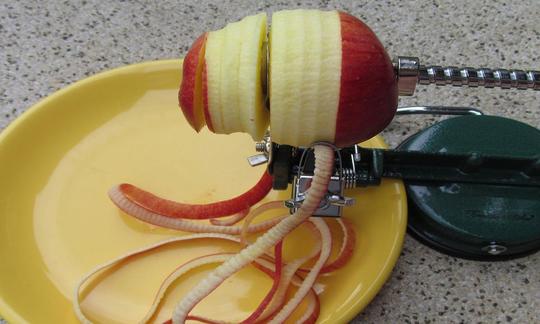

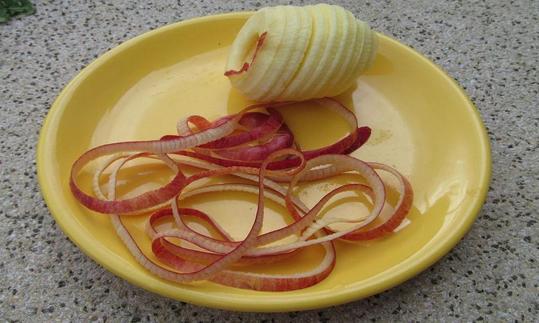

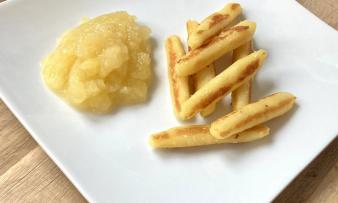
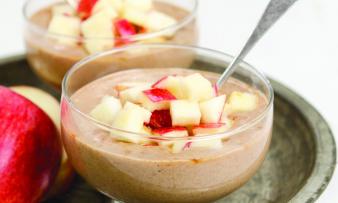
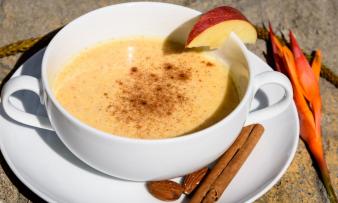





Comments